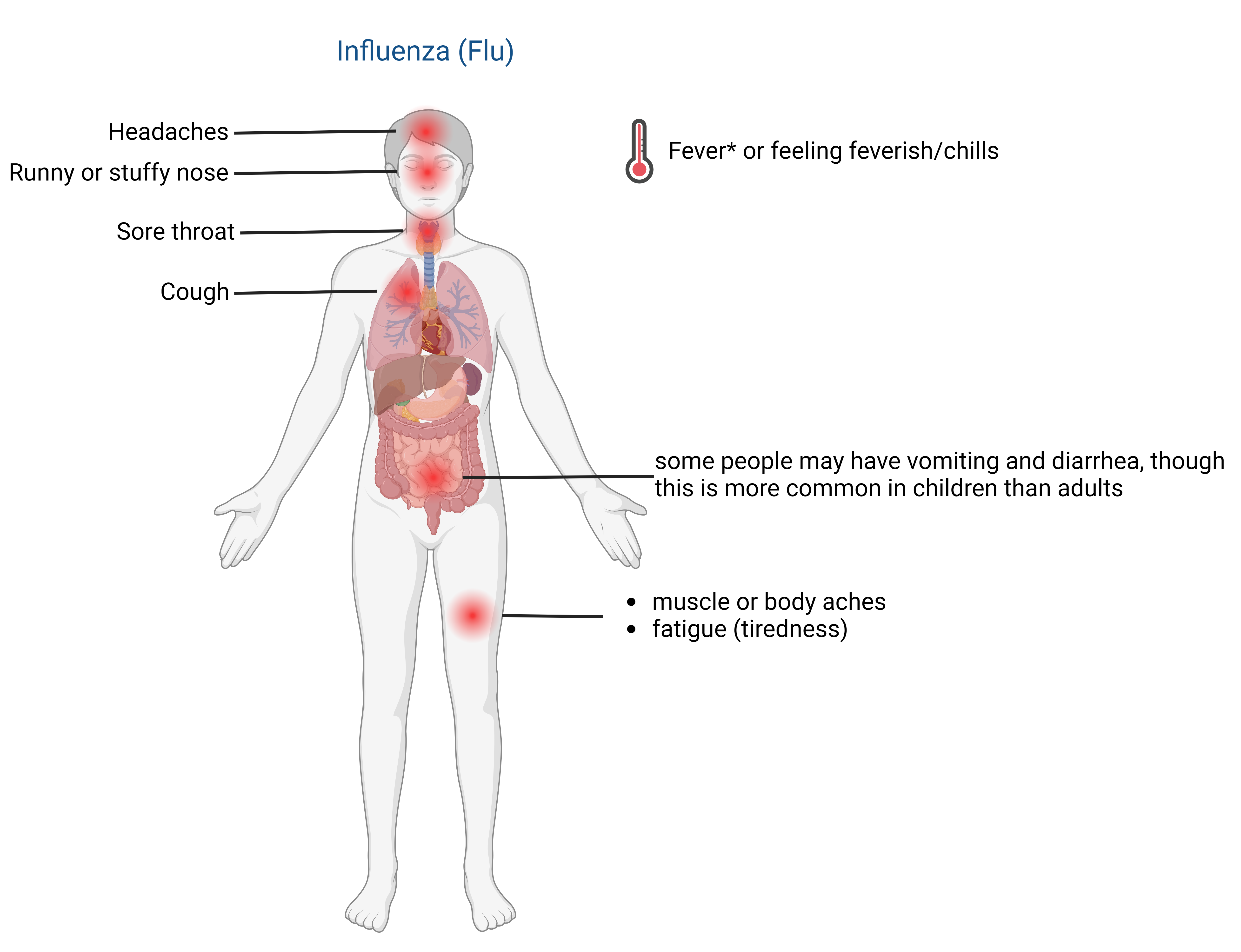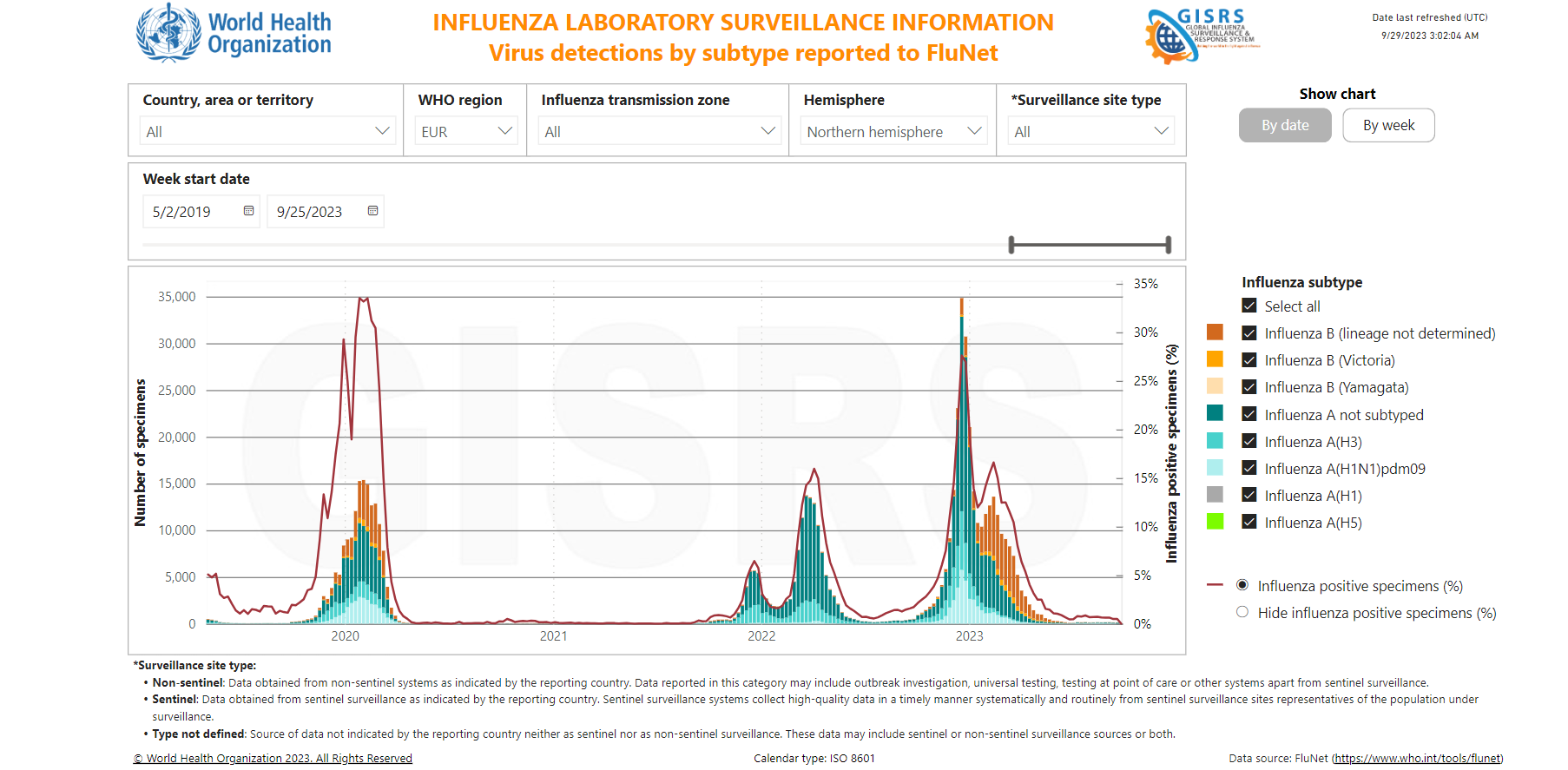
Influenza, commonly referred to as the flu, has the potential to induce a range of symptoms, spanning from mild discomfort to severe illness, and in some instances, fatality. Typically, flu symptoms manifest abruptly.
Not all individuals experiencing the flu will necessarily have a fever.

Influenza (Flu) primarily spreads through respiratory droplets released when infected individuals cough, sneeze, or engage in conversation.
Additionally, it can be contracted by touching contaminated surfaces and subsequently touching one’s face.
The highest level of contagion among individuals with the flu typically occurs during the initial 3-4 days of their illness.
In some cases, otherwise healthy adults can begin transmitting the virus to others as early as one day before they start showing symptoms, and this contagious period may persist for up to five to seven days after the onset of illness.
It’s important to note that certain individuals, particularly young children and those with weakened immune systems, may remain contagious for an extended duration.
Seasonal flu

Above, influenza virus detection within Europe was shown using the data obtained from the World Health Organisation (WHO) and Global Influenza Surveillance & Response System (GIRS). For more information about the global virus circulation, please visit this link.
Each year, global populations experience annual flu outbreaks, with seasonal flu epidemics recurring annually. An exception was seen during the 2021 season due to the infection control measurements during the COVID-19 pandemic.
Influenza results in between 3 and 5 million serious cases and 250,000 to 500,000 deaths per year in the world (WHO).
H1N1 flu, also known as swine flu, caused a 2009-2010 pandemic with approximately 284,400 global deaths. Although the pandemic officially ended in 2010, the H1N1pdm09 strain remains part of seasonal flu infections.
While two influenza B virus lineages emerged in the 1970s and have been co-circulated since 2001, B/Yamagata-lineage circulation has not been confirmed since March 2020.
Pandemic flu

A flu pandemic is a worldwide emergence of a novel influenza viruses in humans. Over the last century, we have witnessed the occurrence of four influenza pandemics. Therefore, the occurrence of another pandemic is inevitable.
Please visit this link for more information about seaonal and pandemic influenza (flu).
If you are interested in assessing testing capabilities for a particular influenza strain, kindly get in touch with us through info@virusbankplatform.be to inquire about the availability of our toolbox.’